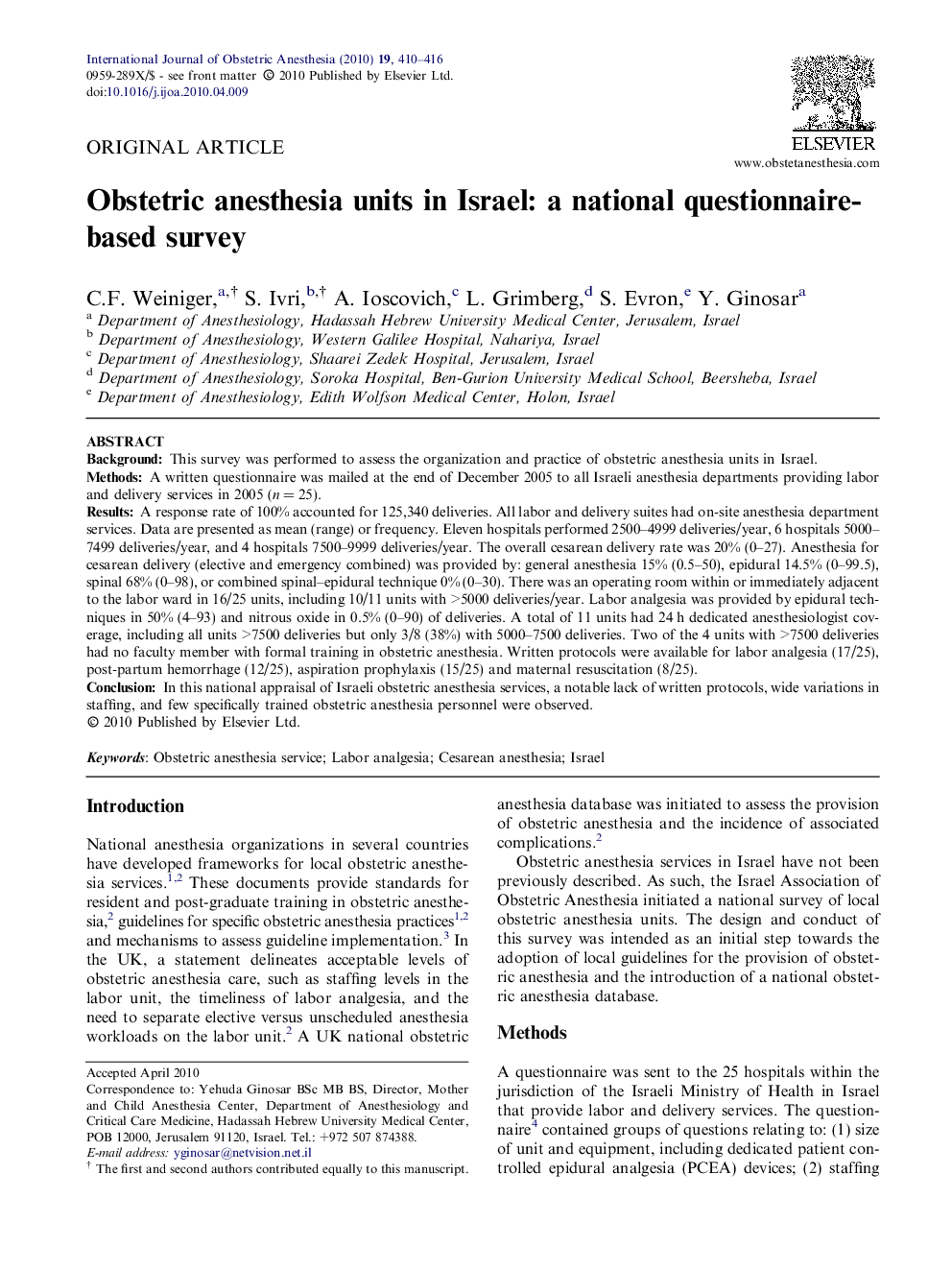| Article ID | Journal | Published Year | Pages | File Type |
|---|---|---|---|---|
| 2758245 | International Journal of Obstetric Anesthesia | 2010 | 7 Pages |
BackgroundThis survey was performed to assess the organization and practice of obstetric anesthesia units in Israel.MethodsA written questionnaire was mailed at the end of December 2005 to all Israeli anesthesia departments providing labor and delivery services in 2005 (n = 25).ResultsA response rate of 100% accounted for 125,340 deliveries. All labor and delivery suites had on-site anesthesia department services. Data are presented as mean (range) or frequency. Eleven hospitals performed 2500–4999 deliveries/year, 6 hospitals 5000–7499 deliveries/year, and 4 hospitals 7500–9999 deliveries/year. The overall cesarean delivery rate was 20% (0–27). Anesthesia for cesarean delivery (elective and emergency combined) was provided by: general anesthesia 15% (0.5–50), epidural 14.5% (0–99.5), spinal 68% (0–98), or combined spinal–epidural technique 0% (0–30). There was an operating room within or immediately adjacent to the labor ward in 16/25 units, including 10/11 units with >5000 deliveries/year. Labor analgesia was provided by epidural techniques in 50% (4–93) and nitrous oxide in 0.5% (0–90) of deliveries. A total of 11 units had 24 h dedicated anesthesiologist coverage, including all units >7500 deliveries but only 3/8 (38%) with 5000–7500 deliveries. Two of the 4 units with >7500 deliveries had no faculty member with formal training in obstetric anesthesia. Written protocols were available for labor analgesia (17/25), post-partum hemorrhage (12/25), aspiration prophylaxis (15/25) and maternal resuscitation (8/25).ConclusionIn this national appraisal of Israeli obstetric anesthesia services, a notable lack of written protocols, wide variations in staffing, and few specifically trained obstetric anesthesia personnel were observed.
